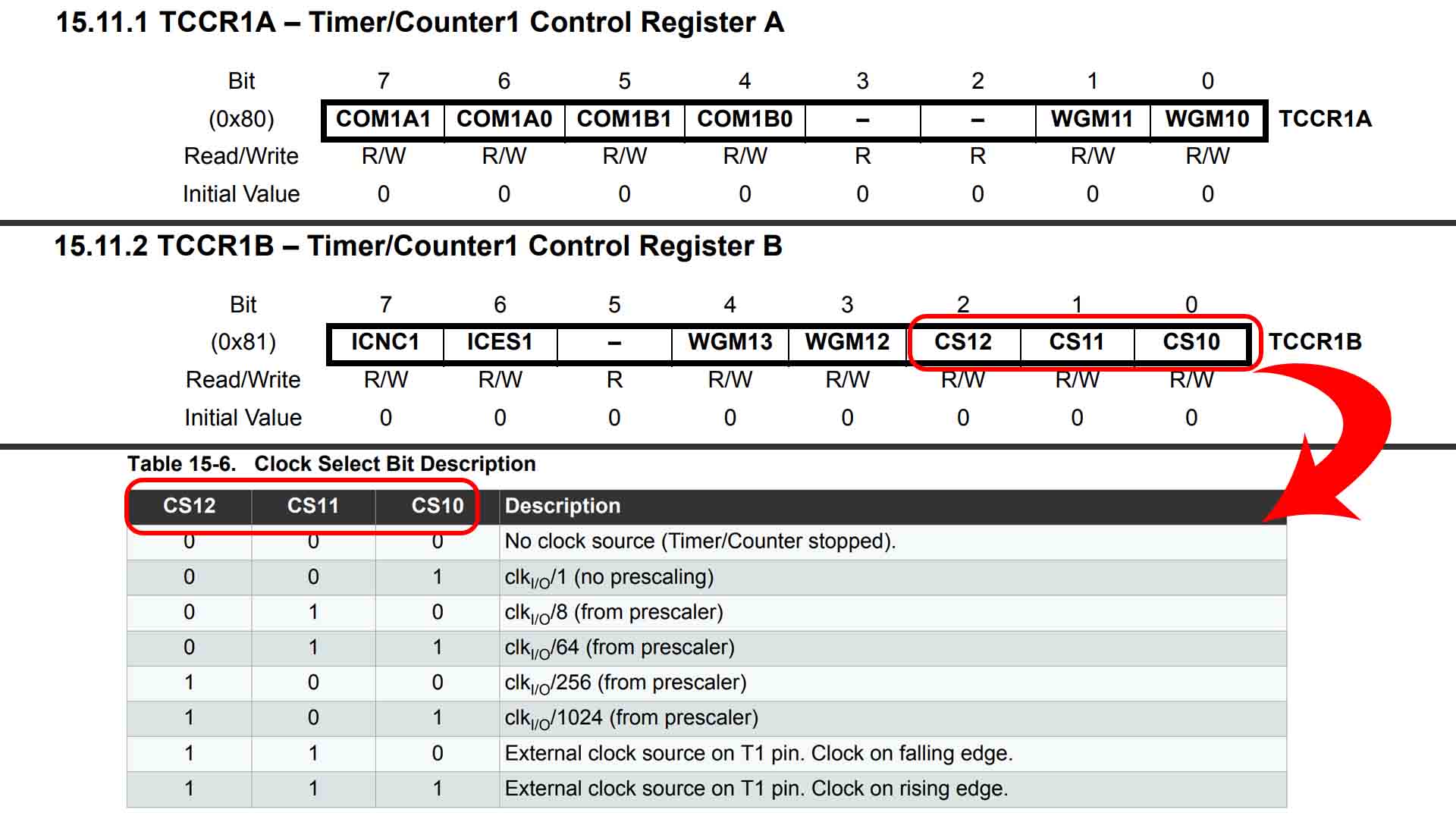
A 0 for interrupt 0, or a 1 for interrupt 1 as the function’s first parameter will indicate which interrupt you want to use. Interrupt 0 is connected to digital pin 2, and interrupt 1 is connected to digital pin 3. The Arduino Uno has two interrupts, interrupt 0 and interrupt 1. The first parameter is the interrupt number. The attachInterrupt() function takes three parameters. To trigger the interrupt service routine, use the attachInterrupt() function in the setup() section.
ARDUINO TIMER1 HOW TO
How to Trigger an Interrupt Service Routine The volatile keyword ensures that the variable is updated if it gets changed in another part of the sketch. For example, if your program is currently running inside of an ISR and the variable changes in the loop() section, the variable inside the ISR might not get updated to the new value. Otherwise, the variable’s value might not be accurate. Declaring a variable as volatile prevents the compiler from optimizing it, and makes sure that it’s stored in the Arduino’s SRAM instead of in a storage register like other variables. If you have any variables in the ISR, like the one for buttonState, it should have the volatile keyword in front of it.

Interrupt service routines can’t take inputs or return values.
ARDUINO TIMER1 SERIAL
Also, Serial.print() doesn’t always work inside an ISR because data is transferred to the serial monitor with an interrupt.

However, if you need a delay in your ISR, you can use the delayMicroseconds() function to achieve the same effect. The millis(), micros(), and delay() functions all depend on interrupts themselves, so they won’t work inside of an interrupt service routine. If you use multiple interrupts, be aware that only one interrupt can be run at a time.
ARDUINO TIMER1 CODE
The code should be as short and fast as possible. Interrupt service routines contain the code you want executed when the interrupt is triggered. Inside the ISR is the code that reads the buttonPin and switches the green LED on and off. In the sketch above, there is an ISR for the button presses called buttonInterrupt(). So the logical choice would be to have the button presses trigger the interrupt. In the blinking LED example from earlier, we wanted the button presses to control the green LED while the yellow LED was blinking on and off. The interrupt service routine will contain all of the code you want to be executed when the interrupt is triggered. To make an interrupt, you first need to write a special function called an interrupt service routine (ISR). The sketch below adds a hardware interrupt to the blinking LED sketch above, so that every button press is detected by the Arduino: int buttonPin = 2 ĪttachInterrupt(digitalPinToInterrupt(buttonPin), buttonInterrupt, CHANGE)

Let’s fix this problem by using a hardware interrupt. When the Arduino gets to one of the delay() functions, it pauses and can’t do anything else until the delay is over so it misses some of the button presses. But when you press the button, the green LED will turn on sometimes but it misses a lot of the presses. If you build this project, you’ll see that the yellow LED blinks on and off just fine. Int buttonState = digitalRead(buttonPin) Here is the code for the circuit: int buttonPin = 7 These are the parts needed to build the project:Ĭonnect the circuit following this wiring diagram: The green LED will turn on when you push the button. In the circuit below, the yellow LED will blink on and off repeatedly. Let’s build an example project that attempts to control a blinking LED with a push button. It includes all of the parts, wiring diagrams, code, and step-by-step instructions for 58 different robotics and internet of things projects that are super fun to build! Blinking LEDs Without Interrupts

The 3-in-1 Smart Car and IOT Learning Kit from SunFounder has everything you need to learn how to master the Arduino.


 0 kommentar(er)
0 kommentar(er)
